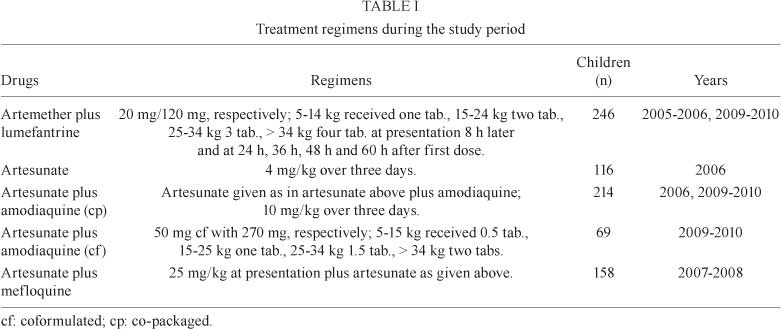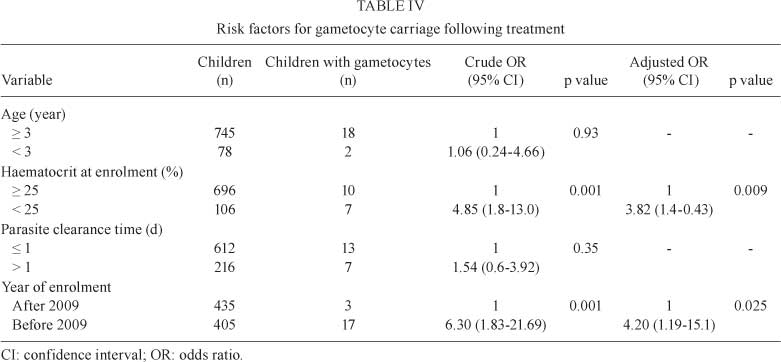Anaemia in falciparum malaria is associated with an increased risk of gametocyte carriage, but its effects on transmission have not been extensively evaluated in malarious children. Plasmodium falciparum gametocyte carriage, emergence, clearance, population sex ratios (SR) (defined as the proportion of gametocytes that are male), inbreeding rates and temporal changes in SR were evaluated in 840 malarious children. Gametocyte carriage pre-treatment was at a level of 8.1%. Anaemia at enrolment was an independent risk factor for gametocyte carriage post-treatment. The emergence of gametocytes seven days post-treatment was significantly more frequent in anaemic children (7/106 vs. 10/696, p = 0.002). In the initially detected gametocytes, the proportion of children with a male-biased SR (MBSR) (> 0.5) was significantly higher in anaemic children (6/7 vs. 3/10, p = 0.027). Pre-treatment SR and estimated inbreeding rates (proportion of a mother's daughters fertilised by her sons) were similar in anaemic and non-anaemic children. Pre-treatment SR became more female-biased in non-anaemic children following treatment. However, in anaemic children, SR became male-biased. Anaemia was shown to significantly increase gametocyte emergence and may significantly alter the SR of emerging gametocytes. If MBSR is more infective to mosquitoes at low gametocytaemia, then these findings may have significant implications for malaria control efforts in endemic settings where malaria-associated anaemia is common.
Plasmodium falciparum; gametocytes; sex ratio; transmission; children







